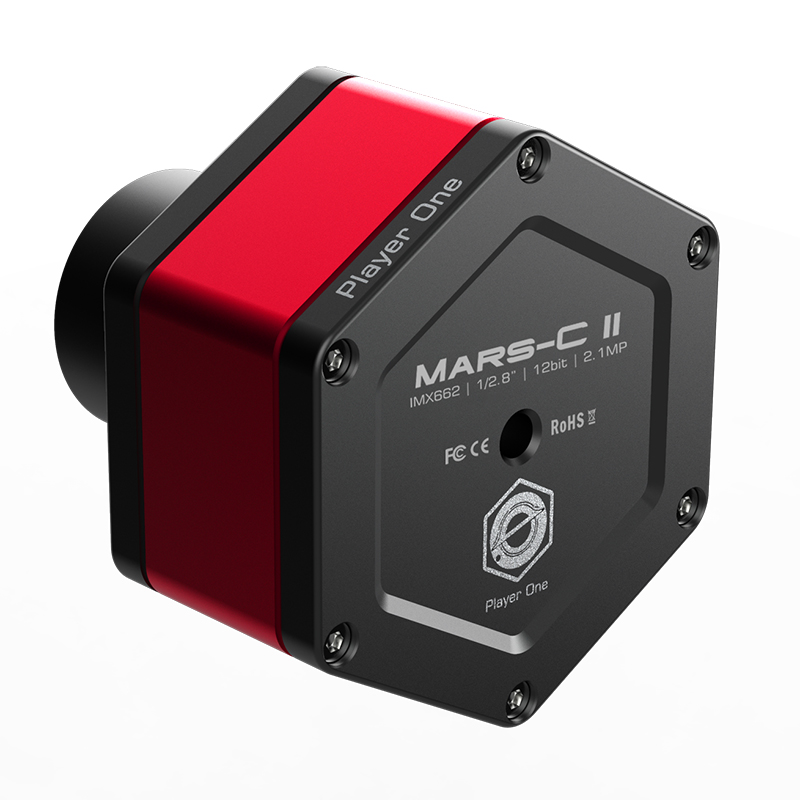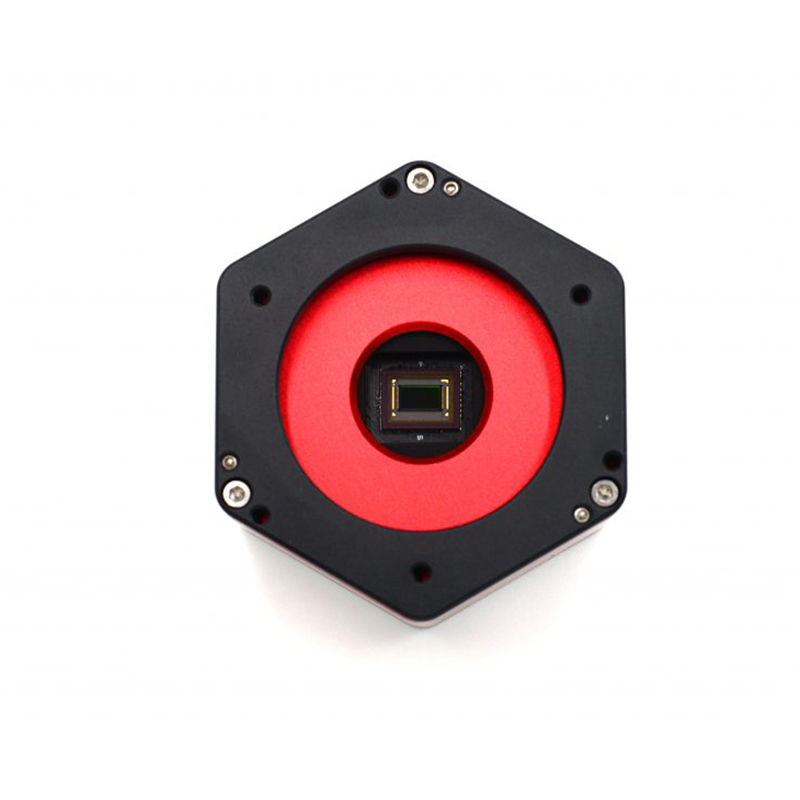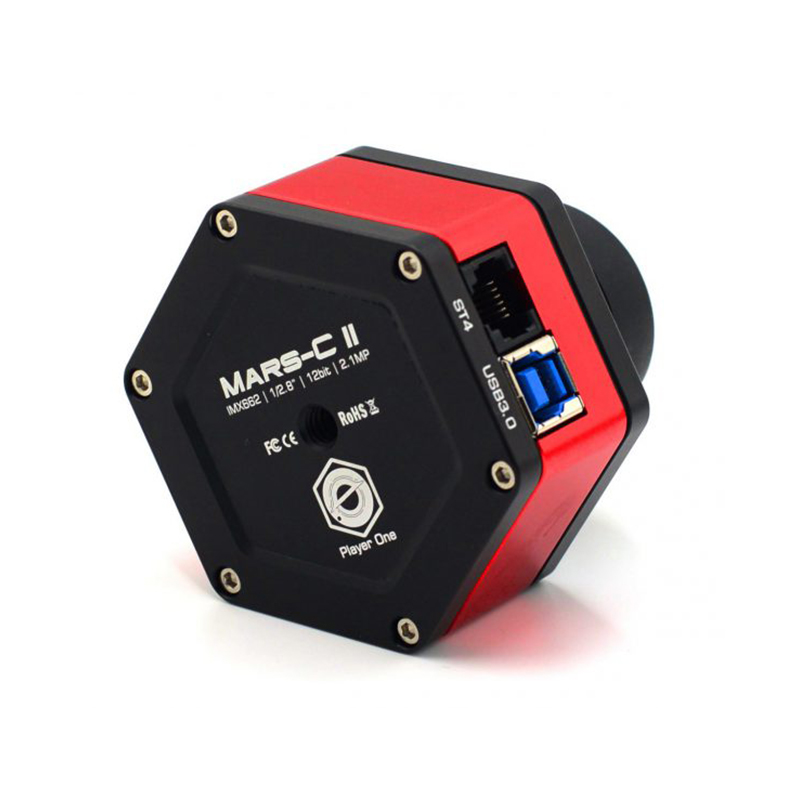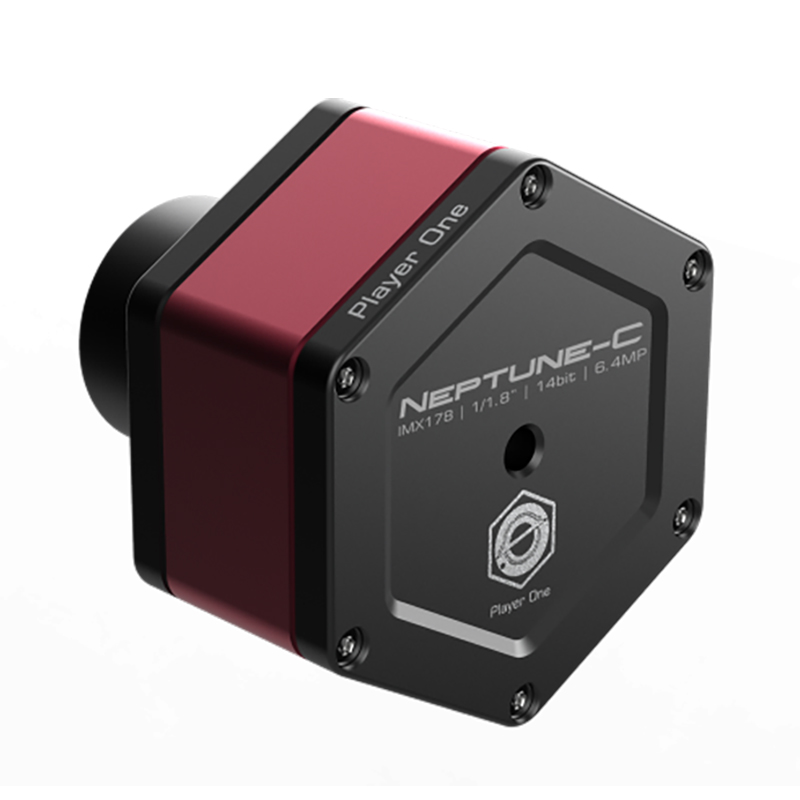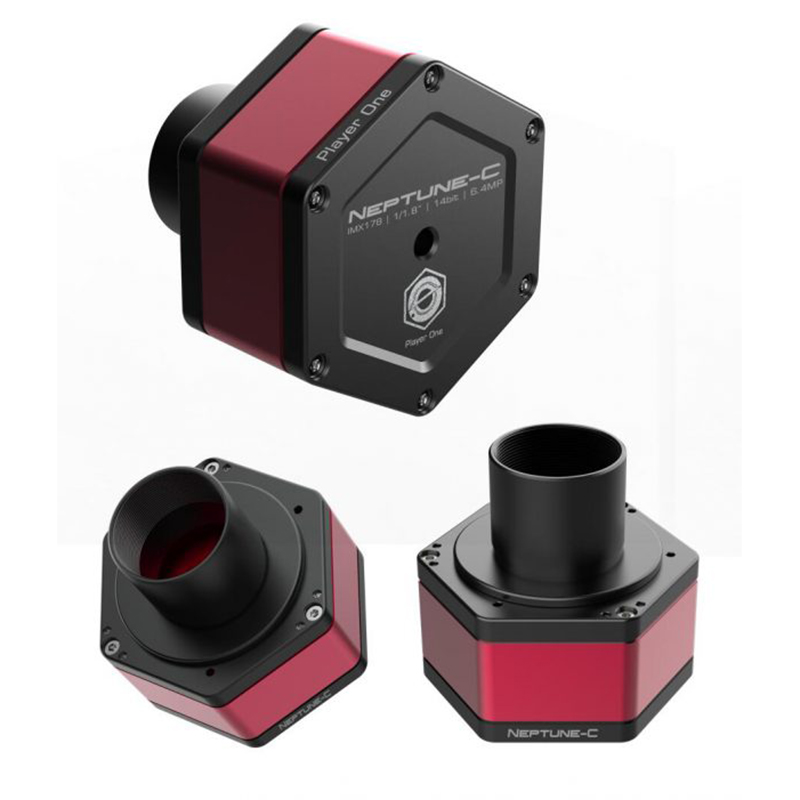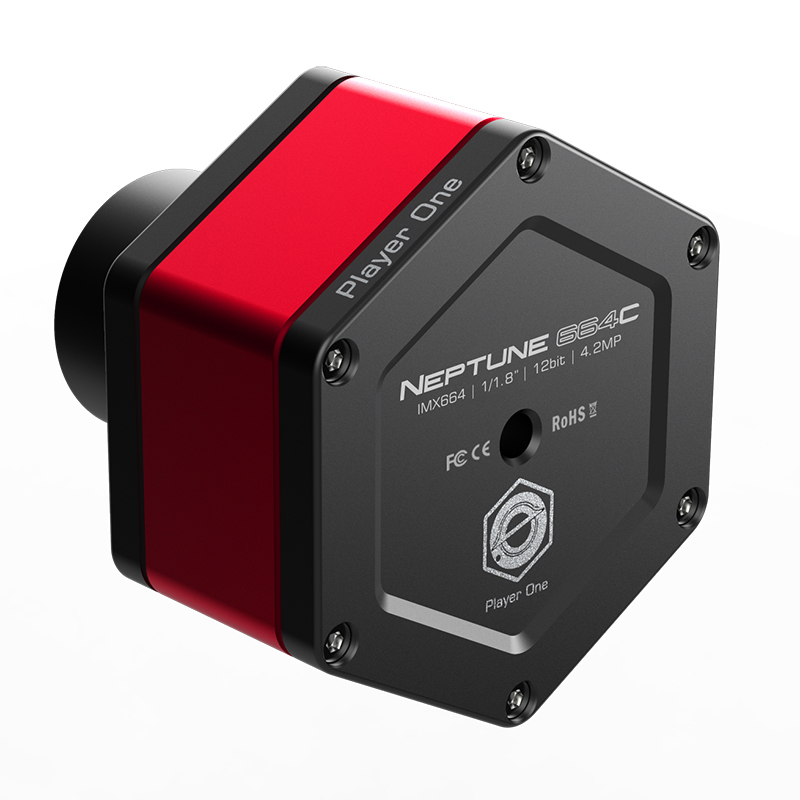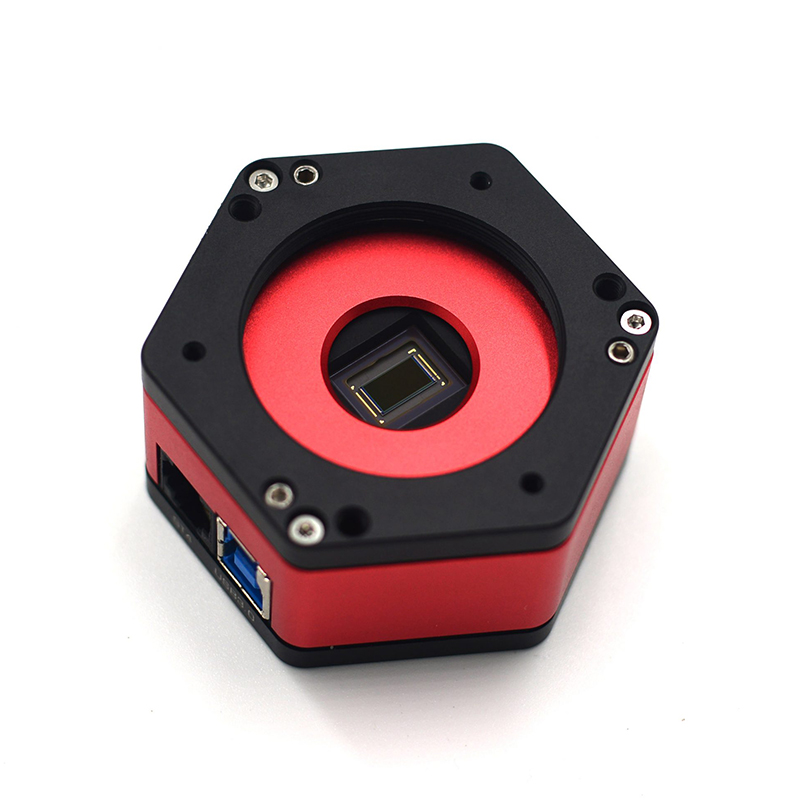The Neptune series is a 1/2-inch format planetary camera series for the top player. It is larger than 1/3-inch and has a higher resolution, and is more suitable for astronomy enthusiasts.
The main hit of the Neptune series is Neptune-C II, yes, you read it right. We directly released the second-generation Neptune model because the plan could not keep up with the changes.
Neptune-C II camera uses Sony’s latest IMX464 chip, which is bigger than IMX462. Neptune-C II is also the world’s first planetary camera with an IMX464 chip.

Product Description
Neptune-C II is a planetary camera developed by Player One Astronomy, which adopts the Sony IMX 464 1/1.8” format sensor. The 2.9um pixel size accommodates a good depth of 12ke with a total of 4.2MP (the resolution is 2712*1538), and the diagonal is 9mm.
Everyone should be aware that the currently available IMX462 chip has become the new choice for planetary shooting, and IMX464, as a byproduct of the same process, is equivalent to an enhanced version of IMX462, with a larger target surface and higher resolution. Come for a better shooting experience.
0.7e ultra-low read noise
Compared with the IMX178 of the same frame, the read noise of Neptune-C II can be as low as 0.7e, and the noise is reduced by about 47%, which is as strong as IMX462!

Sensitivity increase
Compared with another 1/1.8 inch chip IMX178, we find that the IMX464 pixel is larger than the IMX178 at 2.4um, reaching 2.9um.

When used on the same telescope, although the quantum efficiency is not much different, the 2.9um pixel has 46% larger photosensitive area than the 2.4um pixel, which can greatly increase the single pixel to obtain more photons, which means Sensitivity has also been greatly improved.

Near-infrared superlight sensitivity
Not only that, IMX464 also has ultra-sensitive infrared sensitivity characteristics, suitable for playing infrared photography, whether it is matched with IR685, IR850, or CH4 filters, it will give you a new visual experience.

Ultra-high frame rate
Neptune-C II can reach 93FPS at full resolution, which is 55% higher than the 60FPS of the IMX178 chip of the same size, making it more efficient to shoot planets.

Highlights
The fun thing is, with the strong ability to capture infrared lights and the super high sensitivity, the Neptune-C II camera can be used as a monochrome camera with an IR850 filter or CH4 filter to capture infrared lights.
Connecting the Neptune-C II camera to a telescope with a 1.25″ T-Mount, or adding a Barlow lens between the camera and a telescope to extend the focal length for more details.
With a CS lens attached on the Neptune-C II camera, it can be used as an all-day camera or meteor monitoring camera.

Features:
The naming of Player One Astronomy cameras is unique. For example, we name the planetary cameras after planets (They are Mercury, Venus, Mars, Jupiter, Saturn, Uranus, and Neptune, Earth is not included). The size of each planet, to a certain extent, represents the size of camera sensors. We will name Saturn with a 1-inch sensor camera, and for Neptune, we will name it with a 1/1.8 inch sensor camera. All names will be engraved on the housing of the cameras.

Drivers and softwares download: http://player-one-astronomy.com/service/software/
Manuals download: http://player-one-astronomy.com/service/manuals/
Cutting-edge Design
The planetary cameras developed by Player One Astronomy use a scientific and technological regular hexagon to construct the main body line, supplemented by round chamfers to achieve both rigidity and flexibility. The positive red, which is like a summer fire, is matched with the low-key and steady black, and the super-fine frosting process on the entire surface makes the camera look elegant and cool, highlighting the style of high-end players, so much so that you can’t take your eyes off 

2nd Gen – Sensor Tilt Plate
The built-in high-density sponge shading pad can block the light from the side slits without any side leakage.

When taking a solar photograph with a prominence telescope, the Newton ring is annoying. A smoother solar image without a Newton ring could be taken by adjusting the focal plate. Get a much smaller field curvature of the telescope.


Cache
Player One Astronomy cameras are the first one to adopt the DDR3 cache in all planetary cameras in the world! It helps stabilize and secure data transmission, it effectively avoids frame dropping and greatly reduces read noise.
With the DDR3 cache, the Mars-C camera does not have high demands on computing needs any longer, it will still have excellent performance even if it is connected to a USB 2.0 port.

DPS technology
The planetary cameras from Player One Astronomy have DPS (Dead Pixel Suppression) technology. The DPS analyses many dark frames to find out those fixed abnormal pixels and records the map in camera memory. In imaging, in each exposure frame, those positions of dead pixels will be given a median value according to the active pixels around that abnormal pixel.

Overvoltage and overcurrent protection mechanism
Player One cameras produced by the number one player ensure the safety of your camera and other equipment through overvoltage and overcurrent protection mechanisms.
Data Port
When the camera is connected to the USB 3.0 interface and a full-resolution preview is used, it can reach 93 FPS in RAW8 mode (10bit ADC). When recording images, since the actual writing speed will be affected by the writing speed of the hard disk itself, when the hard disk writing speed is slow, the recording may not reach the theoretical speed. It is recommended that you use a high-quality solid state drive to record data to give full play to the performance of the camera.
Use the ST4 guide cable to connect the camera and the AUTO GUIDE port of the equatorial mount to do the guiding.

Performance

Readout Noise
Regarding readout noise, we solemnly promise that all values are obtained from actual tests. And for users, you could use Sharpcap 4 for testing. SC4 has a function called Sensor Analysis, which provides a very simple way to test readout noise.
Player One wrote a tutorial on their website: https://player-one-astronomy.com/service/manuals/
After many rigorous readout noise tests, the Neptune-C II camera can reach a low readout noise of 0.75e at a gain of 350 and around 0.71e at a gain of 400.
If you are interested in readout noise testing, you may try it yourself, which is very simple.
HCG Mode
The Neptune-C II camera has a unique HCG mode, which will automatically turn on when the camera gain setting is ≥83. The HCG mode can greatly reduce the readout noise and retain the same high dynamic range as the low gain.
Mechanical Drawing


